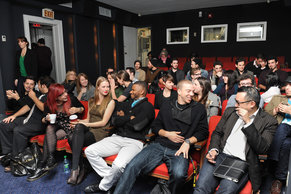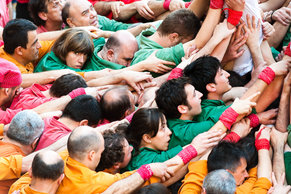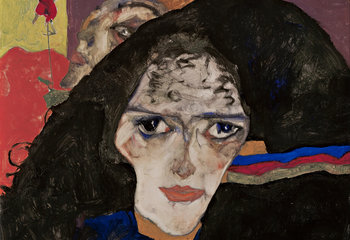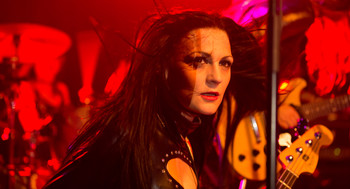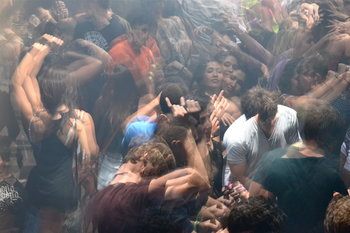|
| |
Cultural behavior is the ability of humans to align their behavior across groups in a dynamic way that emerges with shared experience. Culture isn't centrally planned or controlled but is rather a form of spontaneous order that occurs within any group including nations, ethnicities, cities, organizations, schools, families, subcultures and super cultures. Cultural behaviors overlap in endlessly complex ways whereby most individuals belong to multiple cultures and adapt their behavior to cultural context. The following are common examples of cultural behavior.
Aesthetics | Architecture | Art | Body Language | Celebrations | Ceremonies | Conceptual Symbols | Cuisine | Customs | Duties & Freedoms | Epic Meaning | Ethics | Etiquette | Fashion | Games, Sports & Competition | Holidays & Observances | Humor | Hygiene Factors | Inside Jokes | Language | Lifestyles | Methods | Mores | Music & Dance | Mutualism | Myth | Norms | Pastimes | Performance Art | Politeness | Reciprocity | Respect | Rites of Passage | Rituals | Roles | Saving Face | Sensibilities | Shared Beliefs | Shared Frames of Reference | Shared Meaning | Shared Values | Slang | Social Acceptance | Social Bonds | Social Constructs | Social Habits | Social Identity | Social Rejection | Social Routines | Social Status | Status Symbols | Storytelling | Styles | Traditions | Unspoken Rules | Visual Communication | Visual Symbols | Ways of Life |
Communication BehaviorsHow people tend to communicate in a culture. For example, direct communication whereby you openly state your opinions versus indirect communication where communication is layered with politeness, wit and nuance.NormsNorms are expectations for behavior that outline what's considered acceptable, normal or ideal in social situations. For example, a culture that values individualism whereby you may be expected to speak your mind and push for your own interests versus a culture of collectivism where you are expected to seek consensus and follow the group.Cultural LifeCulture influences lifestyles and all the elements of life that people value as groups such as art, celebrations and traditions.Beliefs & ValuesThe shared beliefs, values and general sense of the world that emerges out of the history and shared experience of a culture.SummaryCulture is the ability of groups to align behavior without any formal systems or rules. The following is an overview of cultural behavior with additional examples.DiscussionAesthetics are perceptions of beauty. These can be individual whereby nobody else may understand your sense of things. More commonly, they are an element of culture whereby you can feel a shared sense of beauty with others.Culture emerges spontaneously and is separate from systems that are defined, planned and controlled. Cultures can provide duties, roles and freedoms that may conflict with those of systems. In many cases, a system will try to influence culture to align to its way. For example, a system of industrial production that tries to influence family culture to create "better" workers or consumers.Epic meaning is some shared or personal sense that something is deeply meaningful and moving.Hygiene factors are norms that will get you rejected by a culture if you don't conform but won't impress anyone if you do conform. For example, a culture where it is a norm to wear clothing.An inside joke is humor based on shared experience.Mutualism is behavior that is mutually beneficial. For example, a family culture with norms that help everyone in the family by sharing burdens such as housework and the need to earn income.Reciprocity is behavior that attempts to repay kindnesses. For example, an organizational culture where a manager tries to get an employee a promotion for supporting them in their mission. This is a cultural thing that is independent of a system that requires the manager to promote high performing employees.Rites of passage are celebrations and rituals that mark the life milestones of an individual. For example, a birthday party.Saving face is a cultural behavior that helps individuals of a culture to avoid social embarrassment. For example, a culture where it is unacceptable to harshly criticize someone in front of others.Cultures typically offer both social acceptance and social rejection whereby people can be accepted by fitting into norms or rejected for perceived violations.Language is created by cultures. People think in language such that culture defines the building blocks of thought and communication. As such, culture is an powerful force that arguably exceeds the influence of systems.Sensibilities are norms or beliefs that are considered obvious common sense such that people may not realize that they are products of culture. For example, the sense in some cultures that it is obvious that shoes shouldn't be worn inside a home.Social constructs are things that are invented by a culture. All abstract concepts such as love, freedom or money fit into this category.Next: Cultural Life
More about cultural behavior:
If you enjoyed this page, please consider bookmarking Simplicable.
© 2010-2023 Simplicable. All Rights Reserved. Reproduction of materials found on this site, in any form, without explicit permission is prohibited.
View credits & copyrights or citation information for this page.
|
















